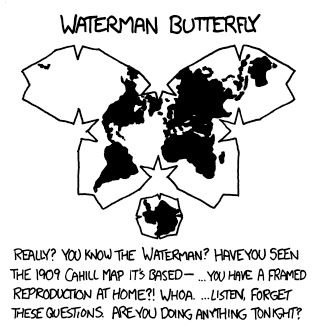Antineutrinos don’t interact with almost anything. They’re just a bunch of wimps. They’re harmless. Neat for mapping nuclear reactors tho.
informative but the name-calling was uncalled for
GenX scientists naming things. Was it a mistake? Maybe, but we’re having a laugh.
Sonic the hedgehog protein has entered the chat
We can’t just talk about the sonic hedgehog protein and not mention that the first sonic inhibitor found was named Robotnikinin
Nothing personnel scientist
How is the map data obtained?
Edit: Looked up the article. It seems they took known geological data and calculated the geo-antineutrino flux map based on measurements from detectors in Japan and Italy. Reactor antineutrinos are calculated from the international atomic energy agency data and assumptions on antineutrino rates.
In short, this is just a distance-from-nuclear reactors map
Magic
I suspect using satellites
But they don’t interact with anything so how are we detecting them I think is what he is asking.
they do interact with matter, just incredibly weakly
They do interact with other stuff a little bit. It’s very difficult to detect them because they hardly interact with anything, but it’s not absolutely nothing so it’s not impossible to detect them. This is well beyond my level of physics knowledge, but apparently one such interaction is a process called inverse beta decay. High-energy antineutrinos that crash in to protons produce a pair of particles that is much more easily detectable. A rule of physics called lepton conservation, which is about the fundamental building blocks of particles involved in a reaction not changing, makes this pair of detectable particles identifiable as being caused by an incoming antineutrino.
Are these the same particles they are trying to detect with the big ice detector thingee in Antarctica
Assuming you’re referring to the IceCube neutrino observatory, yes (although I think it also does regular neutrinos, not just antineutrinos)
Could these be used to locate nuclear submarines and the like?
No. This is a map of estimated antineutrino rates generated from known data.
Data from a theoretical detector that can calculate where its detected neutrinos came from from could be compared to this to find anomalies, but we’re not there yet
Probably not, unless the military is hiding some next level tech.
For example, the current generation of detectors, nearly all of which weigh upwards of a ton, have to be placed within tens of meters of a reactor’s core—inside a facility’s fence.
are you saying we’re making dark matter here on earth
That’s a good question, but no. It was just a bit of word play.
Antineutrinos are not WIMPs. WIMPs are weakly interacting massive particles. Antineutrinos are anything but massive, they’re almost massless, so massless that they were, for the longest time, thought to be massless. They can be a product of dark matter, as speculated, but they aren’t it tho.
Yeah I thought so. I guess you could call them WILPs instead (Weakly Interacting Light Particles).
deleted by creator
Very cool. I can see my workplace on this map.





